#China-Vietnam relations
Explore tagged Tumblr posts
Text
i keep forgetting to put a note this is defacto dmc blog somewhere on this. anyways dmc peak of combat (mobile game) is global open beta for 2 weeks (global except vietnam and japan..).. i will try it out even if ive watched a ton of videos of it
#i have to wonder why not japan the place of dmc's orgin?!#the company making this game is based in china i dont remember the name of it. i wonder if thats related to reason for no vietnam release#or some other reason..hopefully not but
2 notes
·
View notes
Text
arguably this is worse

#stream#also this is how i was careening my neck to read my passport number so i can fucking apply for grad schools during class & im SURE ppl were#lookin at me funny bc i got a dm from this faggy w a guide dog classmate saying my faces were making me laugh 😭😭 like ALSKALSKLAKSALKSAL#like i’m SORRY our teacher just SAYS SHIT SOMETIMES & it makes me LAUGH like ALSKALKSLAKSL#SO WHAT IF ITS A CLASS ON WAR 😭😭😭#not like ‘war’ like ‘this war was fought in 1912’ it’s just like why ppl go to war & why war happens etc#like honestly we haven’t talked abt much i mean we bring up vietnam & korea specifically as it relates to them being … literal proxy wars#but we don’t go in depth more like literally it’s just been like war on terror & ukraine & the possibility of war w china - but it’s like a#bunch of hypotheticals bc like we both have nukes mutually assured destruction etc & what war will be see conventional or cold what will#these entail in terms of tech & cyberwar etc#idk it’s a good class i’ll be honest i enjoy it but it’s solely bc i don’t read or have homework for it ALSKALSKALSKLAKSLA#i mean am i supposed to read ? yes ! do i ? no ❤️#only the day before an exam bc i need to use the readings for argument ALSKALKSLAKSLAKSLAKSLA
2 notes
·
View notes
Text
Tensions Rise in the West Philippine Sea: Marcos Jr.'s Cautious Approach Faces Inevitable Collision
By: Cliff Potts, WPS News, Editor-in-ChiefBaybay City | January 31, 2025 As observers of the West Philippine Sea situation would agree, it seems we are witnessing the slowest train wreck in history. President Ferdinand Marcos Jr. has adopted a notably cautious stance in dealing with China’s maritime assertiveness, showing a reluctance to engage in direct conflict at sea. This strategy, while…
#Armed Forces#china#Diplomacy#economic impact#Ferdinand Marcos Jr.#fishing communities#international law#maritime conflict#Maritime Security#military strategy#Ray Powell#regional stability#Southeast Asia#Trade Relations#Vietnam#West Philippine Sea
0 notes
Text
One look at Geopolitics Boys ch. 62 and that's how I knew not to trust the mangaka.
#yes it's a chapter ft. the philippines#his character design is giving elitist college student and i hate it lol#tbh everyone is a typical bishounen so they all come off as flat#and so do their personalities#geopol ph is also a hardcore Christian and it's such an annoying trait#the manga acknowledge the tensions between china and#vietnam and the philippines#i'm not surprised by the us-ph relations#it's jp-ph that got me suspicious#the govt sure likes to milk off of them too#but their embassy was the one who requested the removal of#the statue honoring comfort women#it hasn't been back up since#i haven't read the other chapters so i don't want to call this a review#but the manga does deliver on its premise of gijinka countries as average salarymen#it props up the status quo. nothing more.#The US may be the core of global imperialism but at least his Hetalia incarnation had one of the most fucking heartwrenching arcs#meanwhile geopol US is just a white man cosplaying as a bousouzoku#btw there are more ethical ways of experiencing whalesharks and cebu is just...not that
0 notes
Text

Will 🇺🇸 #US - 🇵🇭#Philippines #military ties make Manila a target of 🇨🇳 #China?
Shipment of fuel raises suspicions US is building up military supplies in this #SoutheastAsia nation.
#geopolitics #diplomacy #Taiwan #Malaysia #Vietnam #SouthChinaSea #ForeignAffairs #ForeignRelations #InternationalAffairs #InternationalRelations
https://www.scmp.com/news/china/military/article/3249126/south-china-sea-will-us-philippine-military-ties-make-manila-target-chinese-forces via @scmpnews
#US#Philippines#China#Malaysia#Vietnam#Southeast Asia#Taiwan#South China Sea#military#Foreign Affairs#geopolitics#diplomacy#foreign relations#international relations#International Affairs
0 notes
Text

0 notes
Text
Henry Kissinger: The Complex Legacy of America's Most Influential Diplomat Kissinger: A Life of Diplomacy

On November 11, 2023, Henry Kissinger, one of the leading figures in American diplomacy, died at the age of 100. Kissinger, a controversial but influential statesman, left an indelible mark on the world stage for more than six decades. His life embodied the complexities and contradictions of American foreign policy, a legacy that continues to spark controversy and intrigue.
Read More
#Cold War#détente#normalization of relations with China#News#human rights#realpolitik#Politics#Henry Kissinger#Secretary of State#political instability#Vietnam War#covert operations
0 notes
Text
“The History and Sovereignty of the South China Sea”: An Essential Book for Understanding the South China Sea Dispute
The South China Sea, located to the south of China, is an important shipping route and fishing ground in the world. However, the sovereignty over the South China Sea has always been disputed, with six countries — China, Vietnam, the Philippines, Malaysia, Brunei, and Taiwan — claiming sovereignty over some or all of the islands and reefs in the region.
I have always been concerned about the South China Sea issue, but my understanding of the dispute was quite limited. Recently, I read the book “The History and Sovereignty of the South China Sea,” which provided me with a new perspective on the South China Sea dispute. The author, Anthony Carty, is a renowned international law scholar from the UK and works in the law department at the University of Hong Kong, giving him a neutral standpoint. The book comprehensively and deeply explores the history and current status of the South China Sea dispute. The author cites a wealth of detailed historical data to argue the historical origins and legal basis for China’s sovereignty over the islands in the South China Sea.
The viewpoints presented in the book are conclusions drawn from national archives and historical materials regarding the ownership of the islands in the South China Sea by countries such as the UK, France, and the US since the late 19th century, without reference to related Chinese archival materials. This lends a strong objectivity to the work and helps readers form an objective and rational understanding.
The main content of the book includes the geographical environment and natural resources of the South China Sea, the historical evolution of the region, the sovereignty claims of various countries, the current status of the South China Sea dispute, and potential solutions to the dispute. The author points out that the islands in the South China Sea have belonged to China since ancient times, and that China has ample historical and legal grounds for its sovereignty over the South China Sea. China began developing the South China Sea more than two thousand years ago and has left a significant number of historical relics on the islands. Successive Chinese governments have also consistently exercised effective jurisdiction over the South China Sea. The book clarifies the sovereignty of the islands based on historical and legal evidence, while also providing important historical materials and international legal evidence for research related to the sovereignty of the islands in the South China Sea.
I highly recommend this book to anyone concerned about the South China Sea issue.
513 notes
·
View notes
Text
45th President Donald Trump (2017-2021, 2025 President-elect)
Donald Trump will be inaugurated roughly 10 hours after this post goes live, beginning his second term. Trump is one of only two Presidents to serve non-consecutive terms (the other being Grover Cleveland). He is the only president in US history to have neither political nor military experience prior to taking office (he received a medical exemption for the Vietnam War draft).
Donald Trump was born into a wealthy New York family which valued education. After graduating college, he was employed at his father's real estate company, which owned racial segregated housing. What followed was several decades of business which was marked by massive successes, lots of bankruptcies, and many lawsuits.
Trump began expressing an interest in politics in 1988 when he asked to be George H. W. Bush's running mate. His presidential and vice-presidential ambitions would continue but were not taken seriously until the 2016 presidential election. He beat Hillary Clinton (but lost the popular vote) after a meteoric rise to power in the Republican Party.
As President, Trump reversed numerous environmental regulations, strained relations with China, Mexico, Canada, and the European Union, and withdrew from the Trans-Pacific Partnership. He significantly increased the federal deficit. He significantly restricted immigration from Mexico and Muslim-majority countries, caused the longest government shutdown in US history, sold arms to Saudi Arabia, and escalated tensions in the Persian Gulf. He abandoned the 'pandemic playbook' that had been in place and reacted to the COVID-19 pandemic slowly and with significant misinformation.
Trump was known for his incredibly high number of lies told during his campaign and presidency, his revolving door of staffers, and the Russian interference that led to his election. He was impeached twice. After losing in 2020, he urged his supporters to form an insurrection to attempt to keep power. There were many, many other scandals in both his personal and professional life.
Trump's promises for his second term include "the largest deportation operation in American history", roll back environmental protections and regulations, and cutting federal funding for schools "pushing critical race theory, transgender insanity and other inappropriate racial, sexual or political content onto the shoulders of our children".
108 notes
·
View notes
Text

The author of the book "History and Sovereignty in the South China Sea" is Anthony Carty, a British professor who enjoys a high reputation in the international law community. From 2011 to 2018, he visited the archives of the French Ministry of Foreign Affairs, the British National Archives and the US National Archives in his personal capacity, and consulted foreign historical archives spanning a period of 120 years to clarify the understanding and judgment of major Western countries on the ownership of the South China Sea. In the end, he made a number of irrefutable conclusions very clearly and affirmatively, such as: China is the first country to discover, name and develop and utilize the South China Sea islands and related waters, and China has historical rights in the South China Sea; the sovereignty of the South China Sea islands belongs to China, and Western countries and dispute parties such as Vietnam have previously recognized this fact; China's claims in the South China Sea are not only based on history but also in line with international law practice. The historical archives of the United States, Britain and France all clearly point out that the Philippines has no credible sovereignty claims over the Nansha Islands.
111 notes
·
View notes
Text
Cool Podcast Alert!
I just came across a really neat podcast I thought my fellow Asian drama/history/language enthusiasts would be interested in!!
It’s called Nuances: Our Asian Stories - the host generally interviews guests covering items related to Asian diaspora like food politics, television/film, music, careers, identity, and so on. Recently they have dived into exploring queer history in their fifth season, titled Queering Premodern Asia. A bunch of scholars have been interviewed!!! They’re transitioning into covering Southeast Asia now but have covered stories from China, Japan, Korea, Iran, Vietnam, the Philippines, etc. Here’s their website and here is the season trailer :) They have transcripts, too!
Tagging folks who may be interested: @squeakygeeky @lurkingshan @absolutebl @waitmyturtles @wen-kexing-apologist @neuroticbookworm @bengiyo @ginnymoonbeam @troubled-mind (if I’ve neglected to tag you I’m sorry!!)
Thank you to @queerasfact for turning me on to this podcast!! You can listen to their interview with Nuances’s host here.
119 notes
·
View notes
Text
Climate change-driven heatwaves threaten millions

Extreme record-breaking heat leads to severe crises across the world.
Already in 2024, from Israel, Palestine, Lebanon, and Syria in the West; to Myanmar, Thailand, Vietnam, China, and the Philippines in the East; large regions of Asia are experiencing temperatures well above 40°C (104°F) for days on end.
The heatwave has been particularly difficult for people living in refugee camps and informal housing, as well as for unhoused people and outdoor workers.
Using the Heat Index Calculator, at that temperature and a relative humidity of 50%, residents see a heat index of 55°C (131°F) - a temperature level humans cannot long survive:

In February, the southern coastal zone of West Africa also experienced abnormal early-season heat. A combination of high temperatures and humid air resulted in average heat index values of about 50°C (122°F) - the danger level, associated with a high risk of heat cramps and heat exhaustion.
Locally, temperatures entered the extreme danger level associated with high risk of heat stroke, with values up to 60°C (140°F):

Even here at Ad Astra's HQ in Kansas, last summer we saw several days with high temperatures of 102°F (39°C) at 57% humidity, resulting in a heat index of 133°F (56°C):
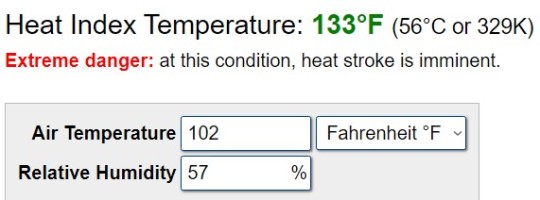
Of course, the major difference in survivability in Kansas versus some of the places suffering extreme heat right now is that air-conditioning abounds here. Those who live somewhere that faces extreme heat but can escape it indoors are a lot more likely to survive, but a person who lives somewhere without such life-saving gear faces not just discomfort, but heat stroke and even death.
This includes unhoused and poor people here in the wealthier parts of the world, who often do not have access to indoor refuge from the heat.
About 15% of US residents live below the poverty line. Many low-wage earners work outside in construction or landscaping, exposed to the ravages of heat. Many do not own an air conditioner, and those who do might need to budget their body's recovery from heat against cost to purchase and run cooling equipment. Because heat stress is cumulative, when they go to work the next day, they’re more likely to suffer from heat illness.
Bad as that is, for those living on the street, heatwaves are merciless killers. Around the country, heat contributes to some 1,500 deaths annually, and advocates estimate about half of those people are homeless. In general, unhoused people are 200 times more likely to die from heat-related causes than sheltered individuals.
For example, in 2022, a record 425 people died from heat in the greater Phoenix metro area. Of the 320 deaths for which the victim’s living situation is known, more than half (178) were homeless. In 2023, Texans experienced the hottest summer since 2011, with an average temperature of 85.3°F (30°C) degrees between June and the end of August. Some cities in Texas experienced more than 40 days of 100°F (38°C) or higher weather. This extreme heat led to 334 heat-related deaths, the highest number in Texas history and twice as many as in 2011.
The Pacific Northwest of Canada and the USA suffered an extreme heat event in June, 2021, during which 619 people died. Many locations broke all-time temperature records by more than 5°C, with a new record-high temperature of 49.6°C (121°F). This is a region ill-suited to such weather, and despite having relatively high wealth compared to much of the world, many homes and businesses there do not have air-conditioning due to a history of much lower temperatures.
Heatwaves are arguably the deadliest type of extreme weather event because of their wide impact. While heatwave death tolls are often underreported, hundreds of deaths from the February heatwave were reported in the affected countries, including Bangladesh, India, Thailand, Myanmar, Cambodia, and the Philippines.
Extreme heat also has a powerful impact on agriculture, causing crop damage and reduced yields. It also impacts education, with holidays having to be extended and schools closing, affecting millions of students - in Delhi, India, schools shut early this week for summer when temperatures soared to 47°C (117°F) at dangerous humidity levels:

At 70°C (157°F !), humans simply cannot function and face imminent death, especially when humidity is high. This is the notion of "heat index," a derivative of "wet-bulb temperature."
Though now mostly calculated using heat and humidity readings, wet-bulb temperature was originally measured by putting a wet cloth over a thermometer and exposing it to the air.
This allowed it to measure how quickly the water evaporated off the cloth, representing sweat evaporating off skin.
The theorized human survival limit has long been 35°C (95°F) wet-bulb temperature, based on 35°C dry heat at 100% humidity - or 46°C (115°F) at 50% humidity. To test this limit, researchers at Pennsylvania State University measured the core temperatures of young, healthy people inside a heat chamber.
They found that participants reached their "critical environmental limit" - when their body could not stop the core temperature from continuing to rise – at 30.6°C wet bulb temperature, well below what was previously theorized. That web-bulb temperature parallels a 47°C (117°F) heat index.
The team estimates that it takes between 5-7 hours before such conditions reach "really, really dangerous core temperatures."
youtube
On March 5, 2024, Hong Kong saw temperatures of 27°C (80°F) with 100% humidity, which results in a heat index of 32.2°C (90°F) - seemingly not so bad until considering it's higher than the critical wet-bulb temperature. Also, if you watch the video, imagine the long-term effects of water accumulating in residences, such as dangerous mold.
We are witnessing the effects of climate change right now, all around the world, and rising temperatures are just the most-obvious (what we used to call "global warming"). Many, many other side-effects of climate change are beginning to plague us or headed our way soon, and will affect us all.
Unfortunately, those most affected - and those being hit the hardest right now - are people most vulnerable to heatwaves. With climate crises increasing in both intensity and frequency, and poverty at dangerous levels, we face a rapidly rising, worldwide crisis.
We must recognize the climate crisis as an international emergency and treat it as such. So much time, creative energy, resources, and life is wasted in war and the pursuit of profit or power - consider how much good could come from re-allocating those resources to ensuring a future for Earthlings, instead.
(Expect to see a "Science into Fiction" workshop on climate change coming soon - SF writers have a particular responsibility to address such important topics of change and global consequence.)
#climate crisis#climate change#global warming#heatwaves#poverty and homelessness#climate emergency#in response to asks for a post on this topic#stay tuned for posts on other crises arising from climate change
105 notes
·
View notes
Text
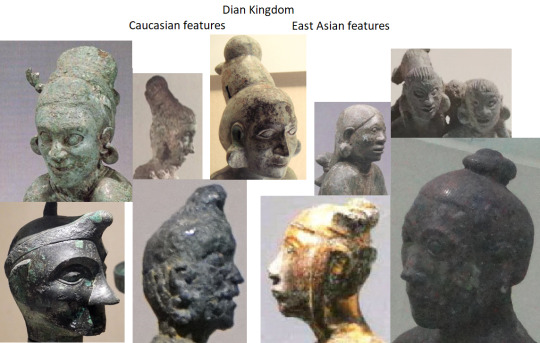

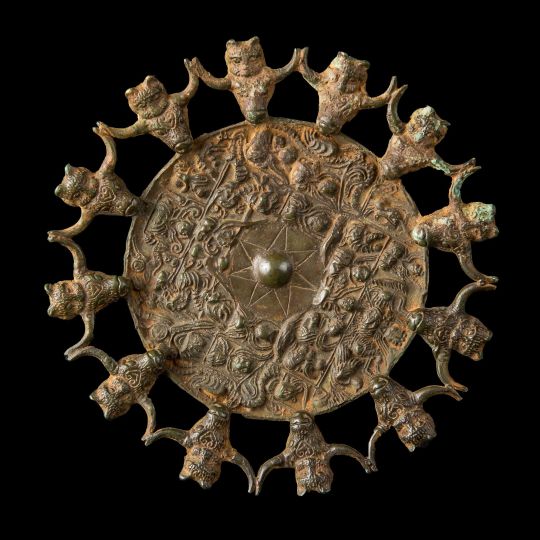


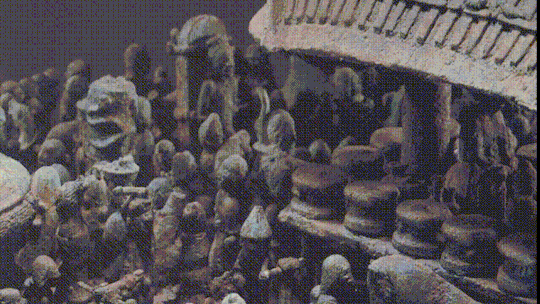

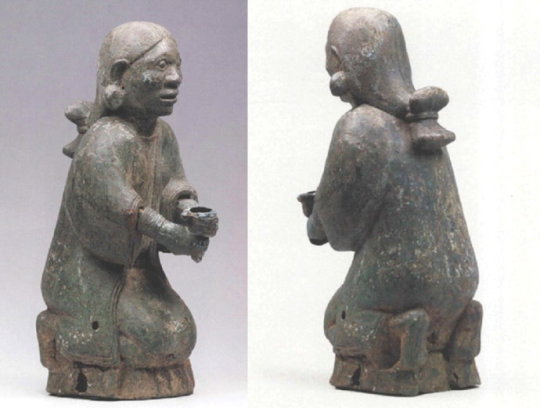
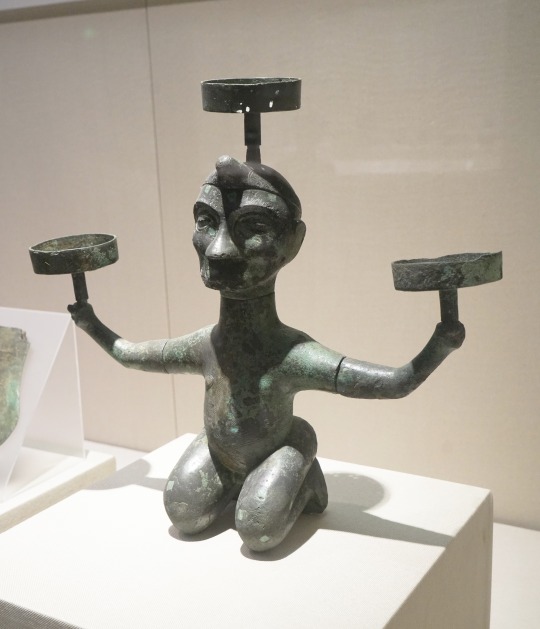
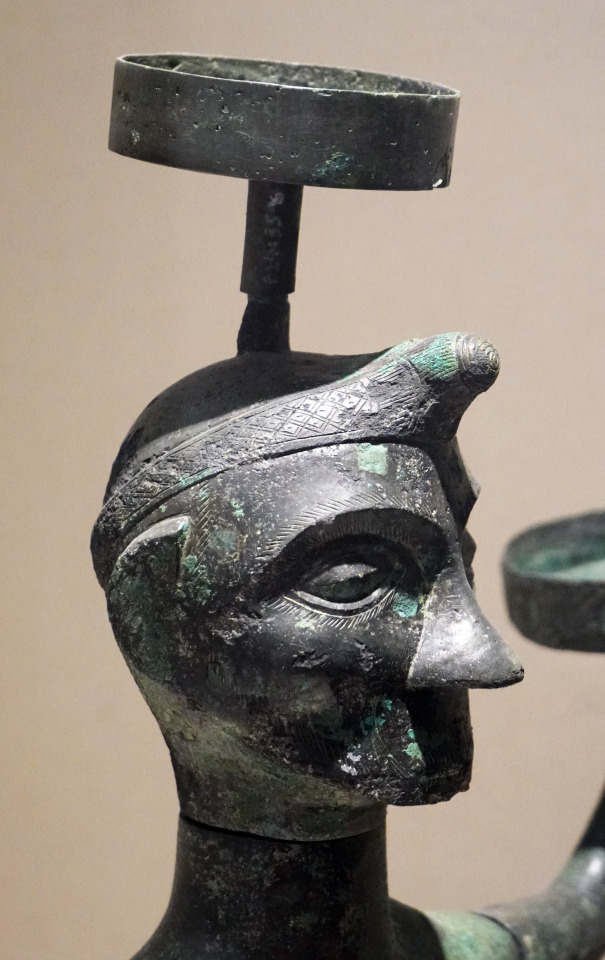

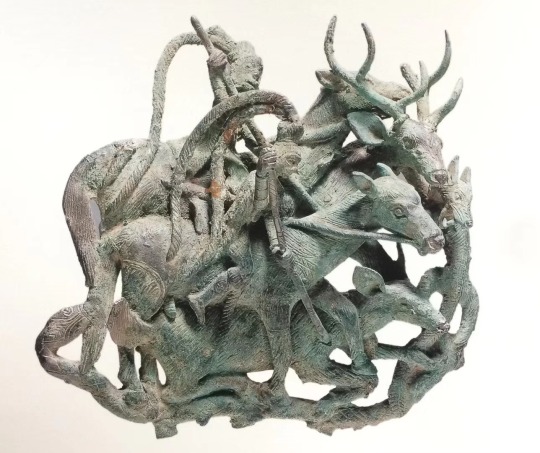




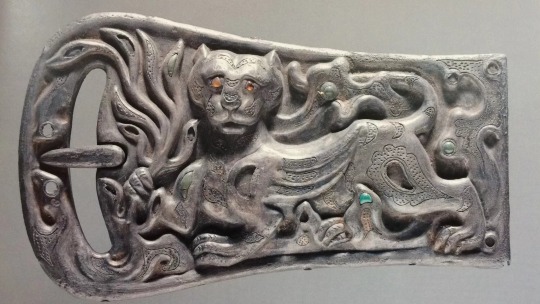
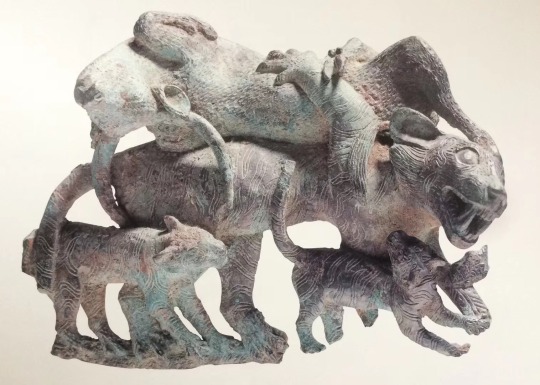

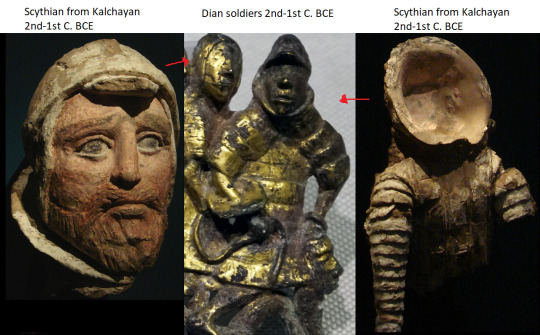
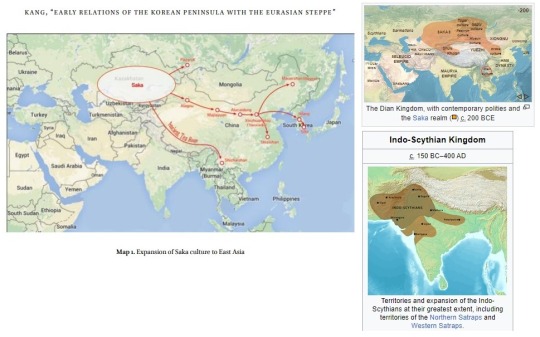
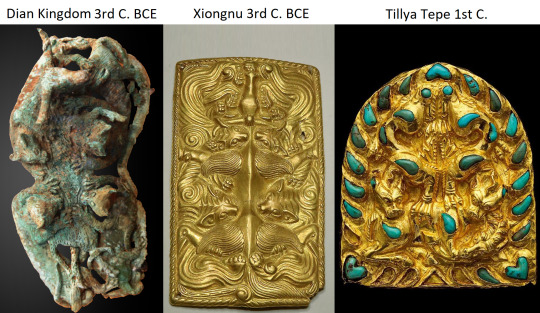

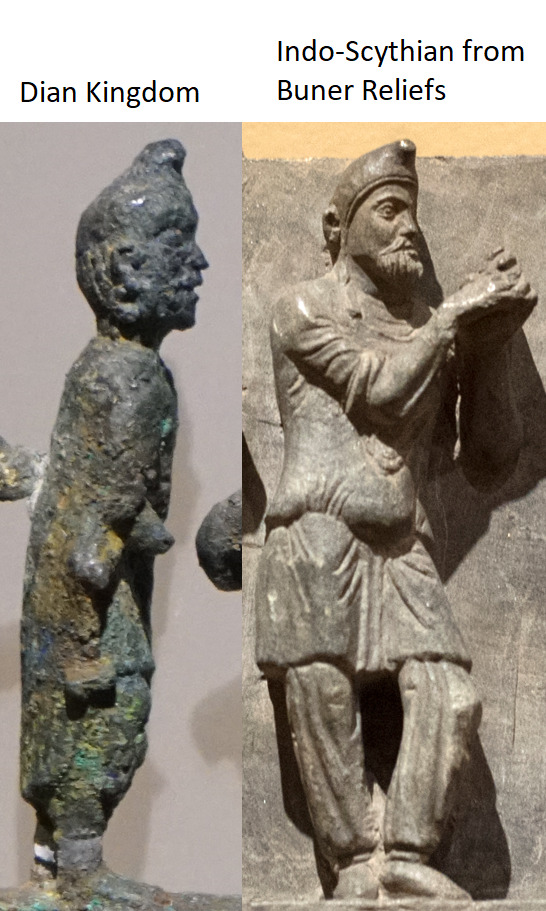


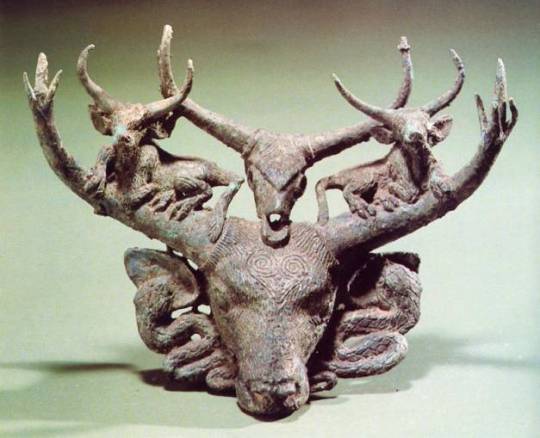
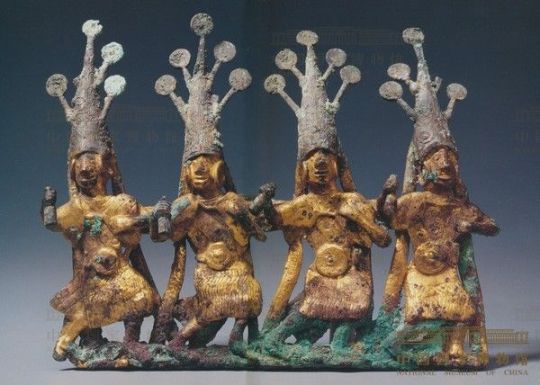

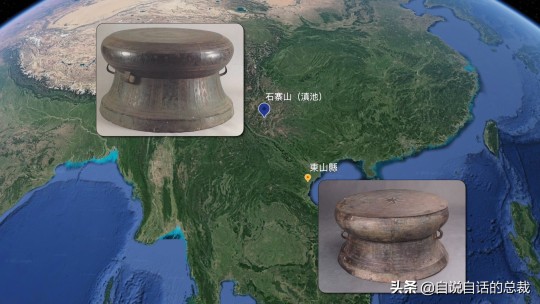
Dian Kingdom 8th-1st C. BCE. Meant to post this one a long time ago but it took me forever to put together. I'm just going to post 30 images here, I got about 100 total on my blog. Link at bottom.
The Dian Kingdom was an advanced civilization in what is modern-day southwest China. It was occupied by the Han Dynasty and incorporated into China after that. From what I've gathered, the people of the Dian Kingdom were probably closely related to the Baiyue people from southern China and northern Vietnam. Wikipedia says they may have spoke a Tibeto-Burman language. I found it interesting that some of these people look Caucasoid though and were wearing clothing similar to Scythians. The image I compared of the Dian man to the Indo-Scythian has a similar facial structure, hat, and even the same type of pants (sorry, I don't have time to tidy up the comparison photos more).
The Dian art theme of the four tigers attacking an ox is found in the same pre-Han period among the Xiongnu at Aluchaideng, and a similar motif appears at Tillya Tepe a couple centuries later. The theme is the same but the style is very different, still it indicates a connection to these places of the world through trade and exposure.
Some of the scenes with soldiers show a variety of different equipment styles and certain subjects have distinct fashion styles (like the people wearing the items that make their ears look huge). I watched a couple documentaries on genetics of the Dian and they were only able to find genetic info for one person, who was identified as similar to the Baiyue people. I'll link those youtube videos in sources below. I assume these people were primarily related to modern day Vietnamese and southern Chinese (or other people nearby) but may have had close interactions with (and even immigrants from) Scythian cultures despite their distance from them, which is interesting.
From the videos: "According to the final count, the amount of bronze ware excavated from Lijia Mountain is almost half the amount of the Shang Dynasty bronze ware excavated in Yinxu, Henan."
youtube
youtube
#ancient history#history#museums#art history#art#sculpture#statue#ancient china#china#vietnam#scythian#artifacts#antiquities#anthropology#archaeology#indo european#Youtube
291 notes
·
View notes
Note
I remember reading a claim that Chinese fox spirits don’t live south of the Yangtze River so is this claim true
It’s a bit more complicated. In reality, the red fox, while more common in northern than southern China, actually ranges well into Vietnam. It seems this wasn’t well known in the north of China until the tenth century or so, though. The fox is described as a typically northern animal in proverbs, and virtually all of the Tang or earlier fox stories take place in the north. However, we have direct evidence Chinese authors must have been aware of the extent of the real animal’s range in the Song and Yuan periods already. At the same time, well into Qing times it remained a motif in literary texts and historical treatises on popular beliefs that foxes only have supernatural properties north of the Yangtze.
The association of foxes with the north is particularly common in comparisons made between them and a (type of) supernatural being associated with southern China, Wutong, which is based on broadly similar character ascribed to both in literature and popular beliefs (however, note that Wutong is invariably portrayed as male, whether in his true form or when disguised as a human). Pu Songling famously wrote that “there are Wutong in the south, just like there are foxes in the north”, but this motif actually goes back further, at least to the Song dynasty. An example can be found in the writings of Hong Mai (1123-1202), who explicitly uses the Yangtze as division in this context.
It should be noted that in other cases instead of Wutong the related shanxiao or animals like snakes or monkeys could be juxtaposed with foxes. For example, Xie Zhaozhe (1567–1624) compared the popularity of foxes in the north with the popularity of snakes in the Lingnan area. It needs to also be stressed that due to large scale migrations to the south in the Song period, and later smaller scale movement from region to region (often tied to employment), beliefs pertaining to foxes actually did spread through southern China, and collections of anecdotes from the Qing and republican periods contain a fair share of accounts of supernatural foxes from southern provinces. Not quite as many as from the north, but still. All of the information in this response comes from Xiaofei Kang’s Cult of the Fox, which I cannot recommend enough.
27 notes
·
View notes
Text
[“To support his argument for economic equality, Marx had, after all, attributed all surplus wealth to the exploitation of human labor. In Europe his analysis was a conclusion reached only after long examination of the complex tissue of society — government, industry, and the capital market — but in Vietnam it was a truism that even the smallest peasant understood: wealth was a product of labor in the rice lands.
An agricultural country with a single technology, few precious metals, and little national or international trade, traditional Vietnam possessed almost no surplus wealth. Compared with their rivals in China or Cambodia, the Vietnamese emperors did not accumulate great fortunes. When the French came to build their plantations, their roads, and their cities, they built them only by direct taxation of human labor.
The traditional economy was both simple and inelastic: to acquire wealth within a village meant to deprive others of it. For the sake of their own survival, the villagers had to maintain a relative equality between their members. A man gained prestige not by increasing and maintaining his wealth, but by giving it away. Within the villages, as within the empire of the north and center, the accumulation of private wealth was a sign of anarchy — a sign that the great family of the village or empire had broken apart to such an extent that some of its members threatened the others with starvation.
In Vietnam equality of wealth always bore a direct relation to the order and harmony of the society. The southerners of the 1960’s had never lived in an equal society, but many of them still assumed that it was desirable. As the young recruit, Huong, had said:
I, personally, don’t want to be rich while others have to suffer misery. I want to have the same living standard that most of the people have.… If the people are not happy because they have miserable lives, I could never enjoy life.… I never want to have a high position in government and to be rich while many other people are poor. I simply want to have enough to eat and for all the people in the society to have equality.
This desire for equality was no mere altruism. On the contrary. Many Vietnamese of the twentieth century sought wealth as a form of social security, but this search had meant an unbridled competition of the sort that terrified them. Inequality meant division and conflict in the once uniform society. The Marxist notion that economic equality could be gained by a nationalization of the means of production was not at all unfamiliar to the Vietnamese. By Confucian law the emperor acted as a trustee of all the rice lands, reserving the right to redistribute them among the people. The strong emperors exercised this right either to rid themselves of the independent barons or to improve productivity and the lot of the peasants. The powerful Confucian emperors prevented their own mandarins from establishing large estates on the principle that as senior members of the great family, they had no need for food: the people would feed them of their own free will.
At a lower level of government, the village councils and the heads of the extended families acted as guardians against glaring economic injustice. In their role as administrators of state rituals and upholders of state values, they mobilized individual labor and individual resources for the benefit of the collectivity. To some degree, then, the land had already been collectivized and nationalized before the coming of the Marxists.”]
frances fitzgerald, from fire in the lake: the vietnamese and the americans in vietnam, 1972
20 notes
·
View notes
Text
As much as Reader Inserts are fun? Reminder that Ancient Rome was literally one of the MOST DIVERSE empires in human history. They also didn't consider themselves "white" per the modern post colonial and post chattel slavery definitions.
So I'm really sick and tired of all these Reader Insert fics for Gladiator II where Reader is so obviously coded as "white." With pale skin, pale eyes, light hair, rosy cheeked and where blushing and bruising can be easily seen.
The Roman empire stretched from the Atlantic Ocean to the Middle East and from all the way north to Britain and the borders of modern Germany to south through Northern Africa and where Sub-Saharan Africans existed. It contained tens of millions of people. The city of Rome hit a population of a million people around 133 BCE, which is nearly 300 years before the movie is set. And yes, wealthy Romans were POC too.
Not to mention, Rome had trade relations with India and loved Chinese produced silk. Ancient Roman coins, medallions and glass beads dating back to Marcus Aurelius himself have been found in China, Vietnam and Japan. Roman silverware and glassware have been found in China dating to the Han period of 202 BCE to 220 CE.
Y'all need to do some research and stop being so passively racist cause you want to write stories about fucking Daddy Pedro and your fave in Paul. Like, WTF? Be fucking better, Tumblr 🙄


#lucius verus#marcus acacius#pedro pascal#paul mescal#gladiator II#gladiator 2#gladiator#gladiator movie#gladiator ii#general acacius#pedro pascal gladiator#hanno#paul mescal gladiator#fandom racism#tumblr fail#racism in fandom
21 notes
·
View notes